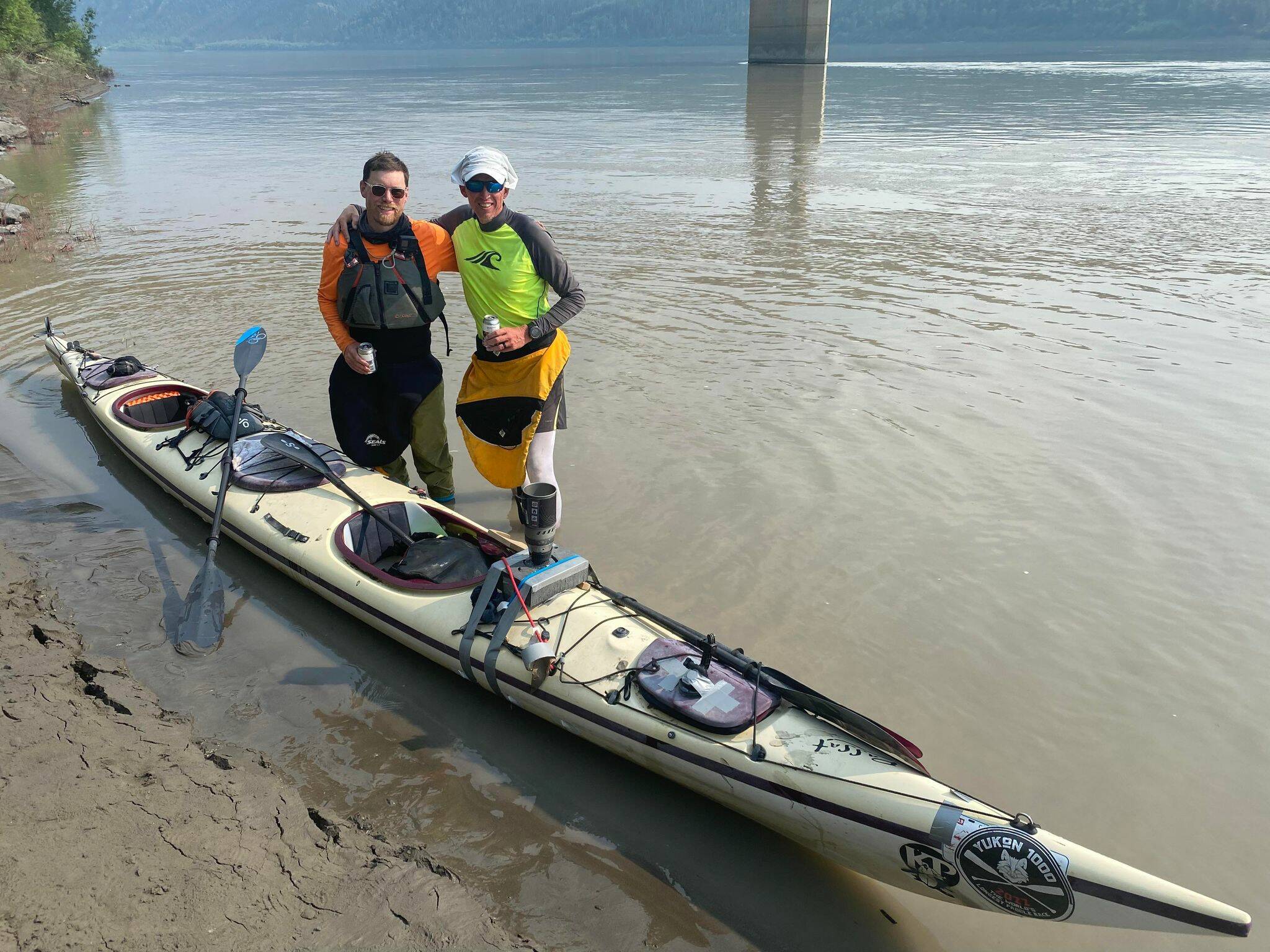Brian Harmon of Bainbridge Island competed in the Yukon 1000, the world’s longest kayak race, placing fifth overall.
The Yukon 1000 began in Whitehorse, Canada and ended on Dalton Highway Bridge in Alaska, about 15 minutes from Fairbanks.
Although nearly 3,000 teams signed up in 2020, when the race originally was planned, only 27 competed in the race because of scheduling issues and the event being pushed back a few years due to COVID. Teams of two travel from around the world to Whitehorse with either a kayak, canoe or paddleboard and move down the river for 18 hours each day. They had to complete 1,000 miles within 10 days. In addition, teams had to provide their own equipment, supplies, and only had a satellite phone to call for medical or evacuation support.
Harmon and his partner from Iowa, Asbjorn “Ozzy” Larsen, began near the back of the pack. The first day wasn’t too hard, but the ones to follow was tough on their bodies and minds.
“We had to take a six-hour stop so we woke up around 2 in the morning,” Harmon said. “It’s unsupported so you wake up wherever you chose to camp the night before. You are in a tent with sleeping bags. We did two sets of clothes — sleeping clothes and kayaking clothes. We would wake up and take off our nice dry clothes and put on our wet clothes and break down our campsite.”
Every hour, either Harmon or Larsen would take a five-minute break while the other paddled. Also, the two had to cook and eat within the kayak.
“We cooked with a Jetboil that we mounted on the boat, and ate three hot meals a day and had coffee too,” Harmon said. “A lot of coffee, that’s the stimulant of choice.”
Harmon’s goal was to travel down the river until around 9 p.m. then look for a campsite that had limited mosquitoes and easy access to shore. He saw the moment as a way to discover nature.
“I liked discovering,” Harmon said. “It was a part of the world where there are no people, especially after the first couple of hundred miles. You go many miles without signs of planes, boats or people. It was fun in my mind to pick a spot and think when’s the last time someone was standing where I’m standing.”
Although every day was excruciating, Harmon’s training set him up for success. He didn’t train in the kayak. Instead, he found ways to get his whole body prepared for the amount of use it would be doing in the event.
“The surprising part is I spent very little time in a boat,” Harmon said. “I got a few targeted and specific distance days in the boat, but I actually built a kayak machine. It’s like a rowing machine but it’s made out of wood. I used a lot of targeted lifting general fitness compared to training for a marathon and running.”
As for the mental aspect, Harmon taught himself how to block distractions and discomforts for as long as possible. In order to push through, Harmon tries to increase the distances before switches in his brain tell him to quit.
Before this event, Harmon had little training in kayaking. Growing up, he kayaked on rare occasions on Mercer Island. However, he did compete in swimming and began kayaking as a chance to get outdoors and enjoy nice weather. He did not take part in competitive kayaking until 2018.
“I ended up getting into the long-distance kayak racing pretty much on a dare,” Harmon said. “I have an uncle who is an avid kayaker, and he sent me to a race, and it kicked it all off.”
Harmon and Larsen set goals for the event. “Our goal was to finish with dignity. We had a time goal but it was ok if we missed it. We also had a loose goal of finishing in the middle of the pack.”
Harmon wanted to finish within 7 1/2 days. The duo beat that with ease, finishing in six days and 10 hours. They ended up finishing third in the kayak division and fifth overall.
“It was surprising,” Harmon said. “The river is so big and people are stopping at different times after the second or third day so we never saw anybody again. We visibly got passed by more boats than we passed and started near the back. So, we assumed we were finished in the back.”
Once they crossed the finish line, Harmon was exhausted.
“Every day you are starting from a far worse place than the day before,” Harmon said. “It was like stairs that were degrading through time. It’s an estimate but we burned about 35,000 calories each so we were losing slowly and our body was falling apart.”
Once home, he needed days to recover.
“It took about ten days to sit comfortably again,” Harmon said. “I took a couple of days off afterward and got tired doing the laundry. I was gorging on food and napping a lot.”
Harmon now is looking to compete in more long-distance kayak races. However, it seems like the Yukon 1000 was a one-time experience.
“I would not do the Yukon 1000 again but I’ll do other long-distance events,” Harmon said. “I am very appreciative of my wife while I was gone for two weeks. It’s hard on everybody when you take that much time off.”



